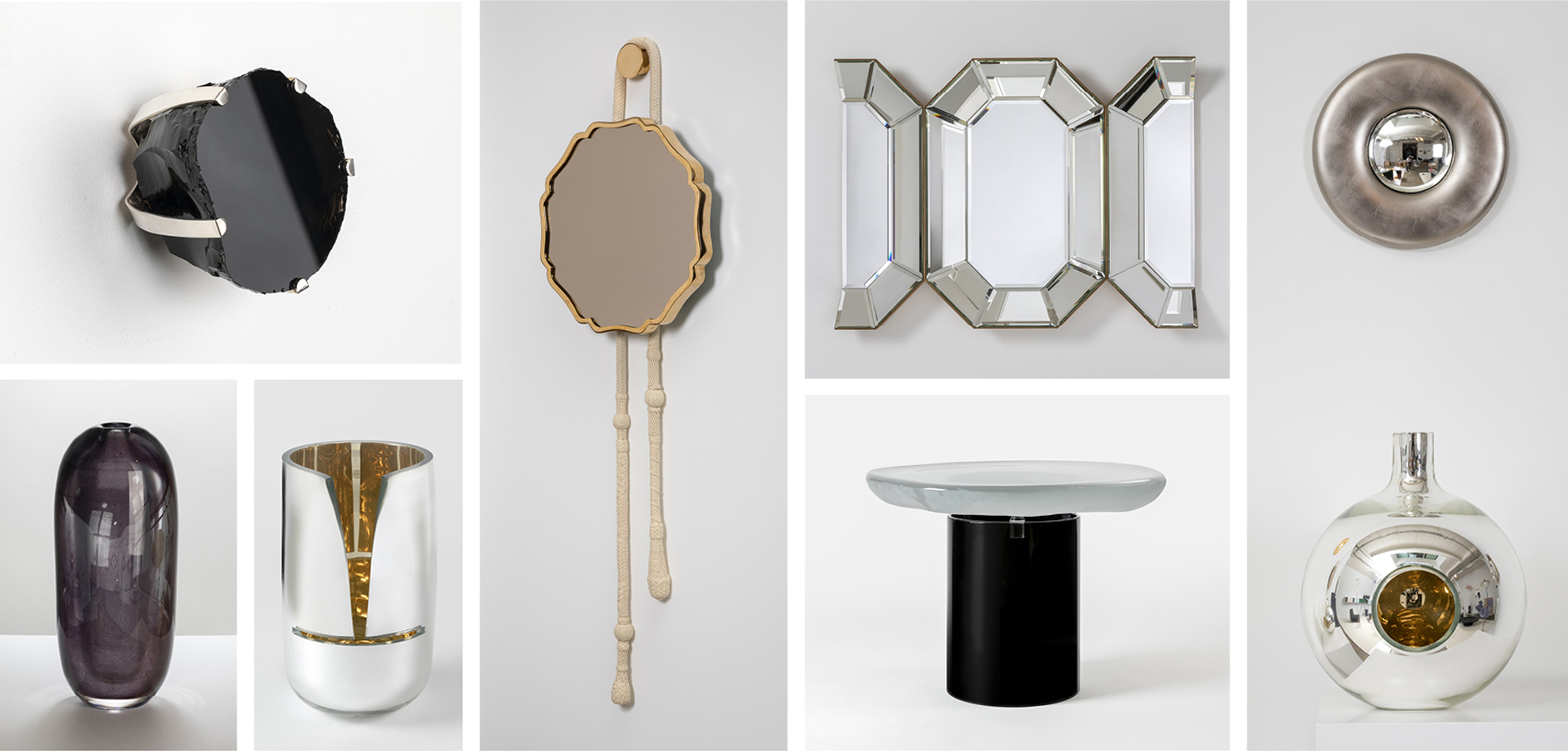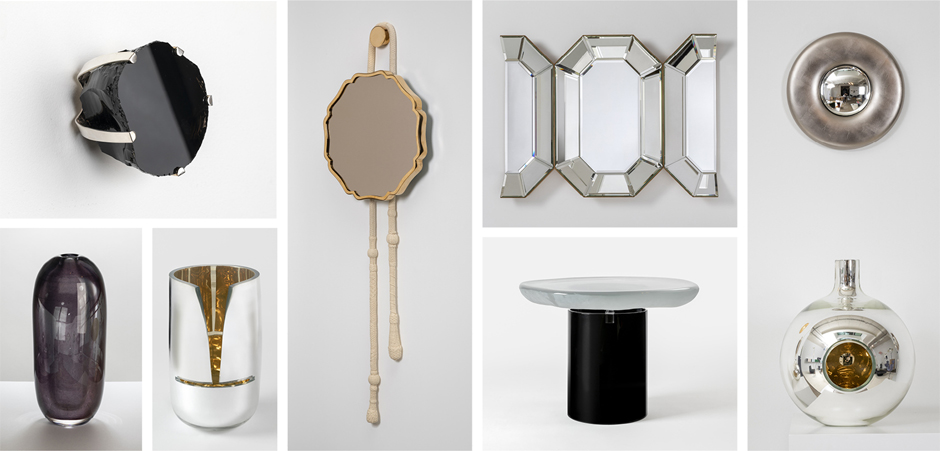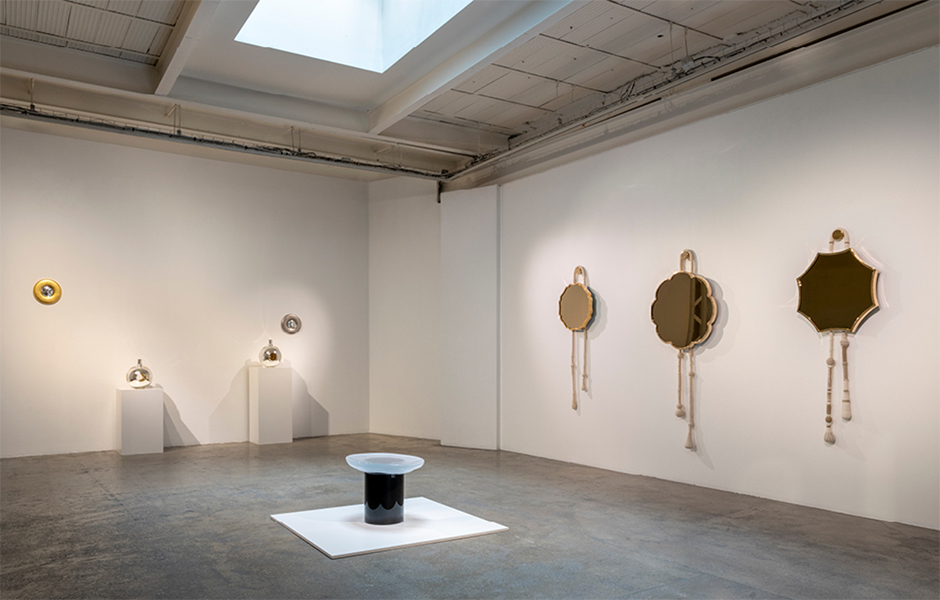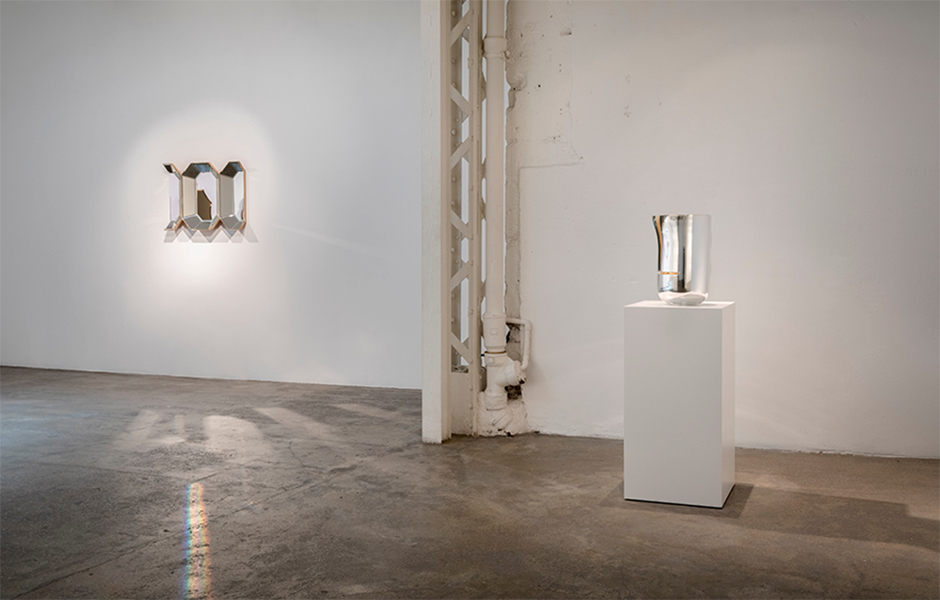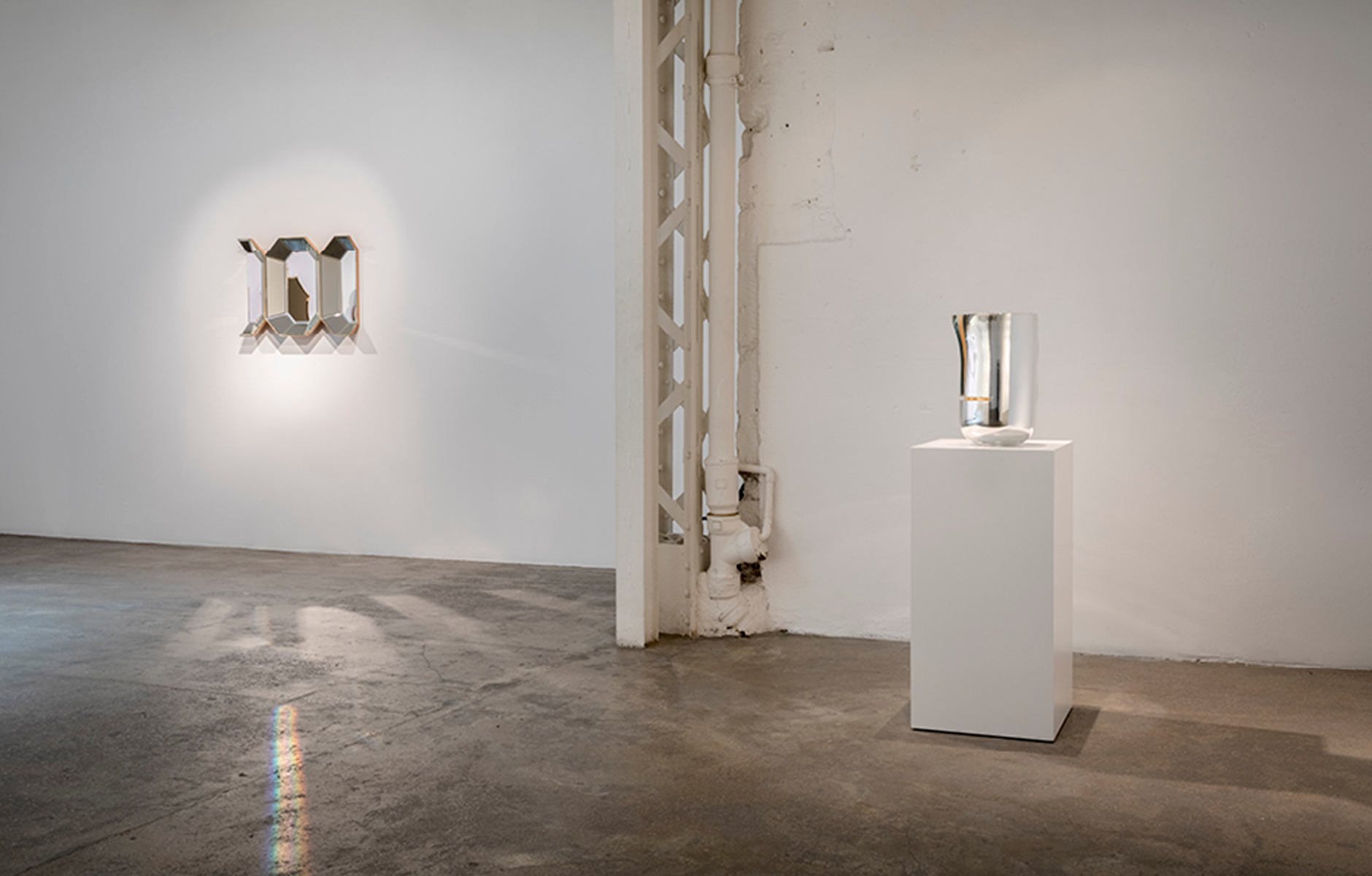Seven Stories About Mirrors for Galerie Kreo
The exhibition `Seven Stoires About Mirrors` follow the development of the mirror through its history. From the first stone mirror made 8000 years ago, the mirror has been transformed from a very exclusive object, often mythically or religiously charged, to become a constant presence in our daily life. Through the history of mirrors, people have strived for as bright and accurate a reflection as possible, refining the phenomenon in various materials and craft techniques.
In these pieces, we see humankind´s strong desire to find the perfect reflection of ourselves. We also see mirrors as tools of divination, as well as artistic and technical achievements like the telescope and microscope, which have given people the opportunity to see beyond what the naked eye can see.
The history of mirrors is a story laced with magic, illusions, vanity and religious power, medieval industrial espionage and murder, the first social protections for workers, psychology, poetry, art and self-consciousness.
Each of the objects in the collection Seven Stories About Mirrors represents a key step in the development of the mirror. From chiseled stone and sand grinding, to the discovery of metal and the invention of glassblowing: the refinement of techniques was a process that took thousands of years. We were interested to follow this development and understand how an object transforms its function, value and status.
Water Reflection Side Table
The Water Reflection Side Table evokes the natural mirror of the water's surface in which mankind first saw its own reflection. Vessels filled with water have been used since prehistoric times as reflective surfaces, for mirroring, ceremonial and by astrologers to follow the movement of the stars in the sky. After Front 3D-scanned the form of a water puddle in the forest, Molten glass was poured into the sand bed mold. The glass’ surface tension creates faint ripples that resemble the reflections of a still pool of water.
Obsidian Mirror
The earliest known man-made mirror was made around 8,000 years ago out of polished obsidian, a volcanic stone. It was found in Çatalhöyük, Anatolia (Turkey). In dialogue with archaeologists from Cambridge University who led the excavations in Çatalhöyük, Front have replicated this first mirror from their archaeological drawing. shaping the obsidian stone by hand-chipping and grinding, polishing it with clay and water, using no modern tools. Front placed the small black mirror in a silver fitting, like a gemstone.
Bronze Mirror
Inspired by ancient Chinese mirrors, the Bronze Mirror highlights the fact that mirrors were metal-made for a long time. The earliest of these were made around 2,000 BC and had beautifully shaped outlines and decorated reverse sides with mythological symbols or personal inscriptions. Mirrors have long been a symbol of wealth and they were fastened in ancient China with a ribbon to the owner’s clothing. This conducted Front to give their mirror an elaborate, hand-crafted rope. The bronze-tinted glass resembles the warm tone of the metal surface but without the scratches, unevenness and corrugation of the ancient mirror, whose reflected surface needed to be polished every day. The bronze frame is made by Marinelli Bell Foundry in Agnone (Italy), founded in 1339 and continuously run by the Marinelli family for 680 years.
Convex Mirror Vase
In ancient Rome a round lens-shaped piece was cut out of the surface of a blown glass globe. This disc was coated with a lead on its reverse, creating a convex mirror. The reflection was distorted but fairly bright in appearance. This production technique was used for many hundreds of years. The Convex Mirror Vase narrates the production technique of the first glass mirrors. The vase was created from what remains after the disc for the mirror was removed and placed in the frame on the wall above it.
Cut Mirror Vase
It was historically a challenge to create flat glass that would give an accurate reflection. In the 13th century the first flat glass was made by blowing a cylinder of glass, cutting and unrolling it into a fairly even plate of glass. Inspired by this process, Front made a vase that seems to be in the process of opening and unrolling into a flat mirror.
The Secret Mirror
In the 15th century, workshops in Venice perfected the technique of making plate glass. The craftspeople were then moved to the island of Murano to keep the secret of their craft away from foreign spies. The guildsmen were sworn to uphold trade secrets on penalty of death. At this time mirrors were rare and valuable items—the cost of one Venetian mirror being comparable to the cost of a naval ship. The French king Louis XIV persuaded some artisans to come to Paris and share their knowledge. In the late 1600s, Gerolamo Barbini contributed to the realization of the Hall of Mirrors in Versailles. The Barbini family still crafts mirrors on Murano, and Front collaborated with them to make the Secret Mirror.
Reflection Vases
Today mirrors are ubiquitous, but reflections still play an important role in science and culture. The Reflection Vases are about how an object changes with its surroundings, literally reflecting the room it is placed within, and metaphorically the values of their eras. Images in the vases appear at first sight to be reflections, but in fact are embedded in the thickness of the glass, using a Grail glass technique. These reflections of the vases' past are forever held in the material of the vase.
